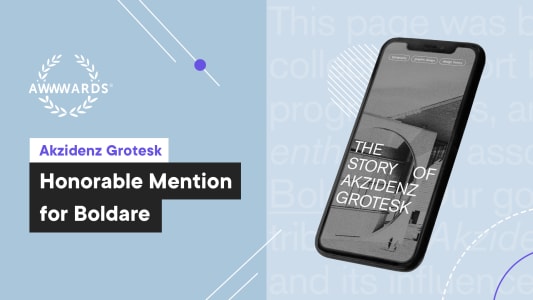How to build a functional website with only three people, no scrum master, and no coding?
Building award-winning websites is what we do on a daily basis. But this time, we set about creating one that was also educational, required minimal staff, and could be developed without coding. How did we do that and does self-organization support problem-solving? Read on to find out.

Table of contents
What’s the point of the History of Collage?
Each of our blog posts has a unique artwork - a digital collage. It’s a technique that gives us creative freedom in expressing the meaning behind each of our articles. Collage is a beautiful and versatile technique with a rich background - one that is worth sharing with the world. And so, the idea for the History of Collage was born.
We also decided that it would not be enough just to create a landing page - we wanted to make one that could go up against the very best. So, we decided that History of Collage would be submitted to Awwwards.com to compete for a sought-after Honorable Mention.
How do we go about building a landing page?
Whenever we build a landing page for a competition, we start with assembling a team and deciding on a theme. We do that in a brainstorming session, where we gather ideas from colleagues with different backgrounds, from marketers and designers to developers. The idea for the History of Collage came as a result of such a session.
The team then voted for their favorite ideas and discussed the potential risks they can carry. For example, at one point the team was keen on creating a landing page dedicated to a unique Boldare cocktail. The idea was ultimately scrapped as we didn’t want our brand to be associated with alcohol.
From there, the team proceeded in a similar way as they would for any other digital product:
- they organized product discovery workshops,
- they decided on a structure and assigned roles to each team member,
- they built the wireframe of the landing page,
- they set up daily meetings to keep each other up to date.
Each landing page is unique and comes with its own set of challenges. The team was tackling a difficult theme while facing some technical issues. How did they manage?
If there’s a will, there’s a way
The subject of art and the challenges of a specific technique can be fascinating. The team wanted to avoid a situation where someone well versed in collages visited the landing page and only to find its content inaccurate. The key to success was researching the right sources.
The team took advantage of the fact that some of Boldare’s designers are art school graduates and asked for their support. The team ended up with a list of reliable sources that they should use, as well as a list of notable art pieces that the History of Collage should talk about.
We didn’t change a winning team
We built the History of Collage with a team of three: graphic designer, developer, and content writer. We decided not to include any scrum masters, product designers, or additional developers due to the nature of the team and the product itself. Here’s how one of the team members justified this decision:
The three of us worked together during the development of a previous landing page, Plantarium. Its theme was completely different from the History of Collage, but from a technical point of view, these two websites were similar. They were both built with no-code technology and they both put a strong emphasis on beautiful design. We had a talk and decided that we have enough experience between us to make this development efficient. After all, our previous landing page was recognized with a Honorable Mention.
Why following Scrum would be overkill - but only in this case
The purpose of Scrum (or any other Agile framework) is to help teams work together. However, this team already had a proven method of organizing the work between them. They discussed the subject and realized that the History of Collage is a simple digital product, so engaging a scrum master and the Scrum framework would add an unnecessary level of complexity. Instead, they would self-organize their work and give each other updates via daily meetings.
It worked very well. For example, when the developer had an idea for redesigning the Narratives section, she made a suggestion to the graphic designer. The changes made it to the final version. Due to the number of shared experiences between the team members, there was no issue with overlapping competencies. Later, we found out that reusing the team from the previous project had yet another benefit - it was budget-friendly.
Webflow is great, but not perfect
When developing the Plantarium page, the team worked in Webflow. It’s an intuitive, versatile tool that allows us to build a functional website without the need to write code. Instead, the websites are built with ready-to-use blocks. For this project, the team also used a CSS grid - a tool that allowed them to manipulate the size and position of each art piece, without disrupting the layout of the section.
Unfortunately, during site export, the team encountered an error: assets were failing to download. A similar problem was already reported on Weblow’s forum but hasn’t been solved (source). The developer ended up editing the code of the History of Collage manually - a solution that is not ideal, but was appropriate for our needs.
The History of Collage - a summary
We built a functional, visually appealing website with a team of three, no scrum master, and no coding. The team was involved in picking the theme and was allowed to make their own decisions. That freedom carried them throughout development and revealed itself in the way the team solved problems - even those that were highly technical.
We ended up with a website that shows that in the right hands, collages are universal. We are now waiting to see if the jury of Awwwards.com will share our appreciation for the History of Collage. Stay tuned to our blog and social media channels to see if they do.
Share this article:










